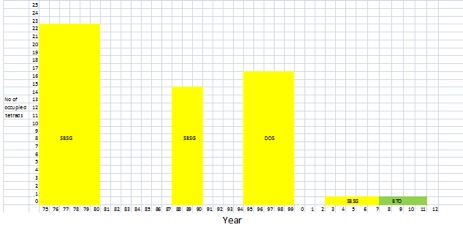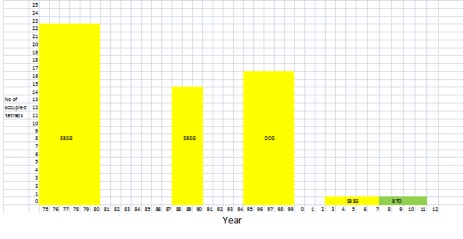Birds Near and Far
Home books dvds apps sites extra maps links contact us blog Buy
Birds Near and Far
Home books dvds apps sites extra maps links contact us blog Buy

A blog by Dave Gosney about some of the birds and places that feature in his books and DVDs but also about the state of birds in the Sheffield area

16th September 2014
Here yesterday, gone today
When birds decline they usually do so over a period of decades at least. But in the Sheffield area one bird that formerly had a substantial population has disappeared within one decade. Can you guess which species it is?
Well, let’s just say I was prompted to write this when I read a press release from the BTO stating that all three British wagtails were on the decline. Here’s the story of what’s happened to the Yellow Wagtails on the Limestone Plateaux of Derbyshire
The sudden demise of the Yellow Wagtail on the limestone plateaux
The 10 km square SK17 is situated entirely within the White Peak of Derby shire and consists of areas of limestone plateaux, bissected by steep valleys, the Limestone Dales, such as Monsal Dale and Millers Dale. Perhaps the most characteristic species of the limestone meadows on those plateaux has always been the Yellow Wagtail.
Back in 1975-80, when the Sheffield Bird Study Group carried out its first tetrad atlas survey, Yellow Wagtails were found in 22 of the 25 tetrads in SK17. By the time of the next similar survey in 2003-08 they were found in only one. There have been no reports of Yellow Wagtails in that area since 2008 - an entire population wiped out in the space of 30 years. But the results of other surveys shows that the decline was even more sudden than that.
In 1988-90, the SBSG organised another survey based on making 1-hour counts in every tetrad in their recording area. By then, it looked like Yellow Wagtails had already started to decline, being found in only 14 of the 24 tetrads where counts were made in SK17. Even so, those 14 hours spent in areas that still had Yellow Wagtails yielded a count of 41 birds. That's not bad given the 1-hour limitations of each count. Bear in mind that the previous survey(1975-80) had been more thorough, with no limit on the hours spent so the figures for 1988-90 were minimum numbers.
The next thorough survey came shortly after, in 1995-99, when the Derbyshire Ornithological Society did their own tetrad atlas survey and showed that, in fact, there were still wagtails present in at least 16 tetrads.
At around this time I remember attending a talk by a birder who had taken on the job of persuading the local farmers that, if they managed to preserve their remaining limestone meadows, they could take advantage of the funding available from stewardship schemes. For whatever reason, that program singularly failed to protect the Yellow Wagtails.
The next survey by the SBSG, started only 4 years after the DOS study and yet, by then, the population had disappeared almost completely. Yellow Wagtails were found in just 1 tetrad in SK17. There they were judged to be 'probably breeding'. The wagtails weren't being overlooked, they really had gone and had disappeared at some point between the two surveys which started and finished just 4 years apart.
In the period 2008-2011, as part of the BTO Bird Atlas, observers reported the results of 87 1-hour counts in SK17. Not a single Yellow Wagtail was seen or heard, though the BTO's data from other sources included 1 record from 1 of the tetrads during that time. Using directly comparable methods, we'd gone from 41 birds in 24 hours in 1988-90 to none in 87 hours 20 years later. And from being modestly widespread, in 16 tetrads, in 1995-99 to totally absent 10 years later. How quickly things can change.
